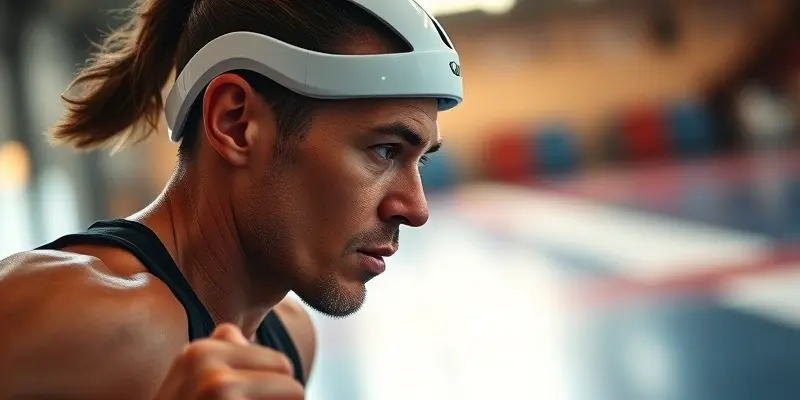How AI Injury Prediction Tools Are Revolutionizing Recovery
At GymPulse Club, we’re passionate about practical fitness that keeps you moving safely. Whether you’re a weekend warrior, competitive athlete, or just love staying active, avoiding injuries is key to long-term progress. But what if artificial intelligence (AI) could minimize your risk—and help you recover smarter when setbacks happen? Let’s explore how the latest AI tools are reshaping injury prevention and recovery, and how you can use them to stay strong and motivated.
What Are AI Injury Prediction Tools?
Imagine having a virtual coach who knows your training habits, monitors your movement, and even predicts when you might be pushing too hard. That’s what AI injury prediction tools do! They combine data from wearables, health history, and even environmental factors to build a personalized “risk profile.”
Instead of relying on guesswork, AI uses machine learning to spot patterns—like subtle shifts in running form or spikes in training load—that might signal danger ahead. You get real-time alerts or risk scores for injuries such as hamstring strains or ACL tears, so you and your coach can adjust your plan before a tweak turns into a major setback.
Evidence-Based Prevention Strategies
Not sure what to do with all these insights? Leading teams and trainers are already putting AI to work:
- Targeted Prehab: AI can flag if you’re at high risk for a hamstring strain, then recommend tailored strength or flexibility routines. In some studies, this has slashed hamstring injuries by up to 72%.
- Smarter Workouts: If your training volume is creeping up too quickly, AI will suggest dialing it back or adding an extra recovery session. Programs like these have cut overuse injuries by more than 80% for some athletes.
- Early Alerts: AI doesn’t just wait until you’re hurt. Real-time feedback during practice or competition means small tweaks—like fixing running form—can be made instantly, preventing injuries before they start.
- Safer Returns: After an injury, AI tools compare your current movement and strength to your baseline, helping ensure you’re truly ready to get back in action.
The real power? These strategies aren’t just for pro teams. Many gadgets and apps using AI are now accessible for everyday fitness enthusiasts.
Recovery Best Practices: Integrating AI for Smarter Healing
Recovering from an injury isn’t just about rest; it’s about structured progress. Here’s how you can make the most of new tech, no matter your experience level:
- Baseline Assessment: Start by recording how you move, your strength, and your endurance—either via a fitness app or wearable.
- Personalized Recommendations: Follow AI-driven advice for gradual increases in training volume and intensity. Let the system guide you through each phase of recovery.
- Cross-Training: Use AI suggestions for low-impact exercises that maintain your fitness (think cycling or swimming) while protecting your injured area.
- Nutrition Matters: AI-powered platforms can now tailor meal plans—boosting protein for muscle repair, adding anti-inflammatory foods like salmon and turmeric, and ensuring you stay hydrated and get essential vitamins such as vitamin C and B vitamins.
Gadgets & Tools to Support Your Comeback
Thanks to today’s technology, your recovery toolbox is smarter than ever:
- Wearable Sensors track movement and biomechanics 24/7, alerting you to risky patterns.
- Smart Recovery Devices—think foam rollers, percussion guns, or compression boots—use AI to schedule sessions, optimize intensity, and track your progress.
- Mobile Apps act as virtual rehab coaches, sending video guides and reminders based on your real-time data.
- Virtual Physical Therapy lets you access personalized rehab exercises and progress checks, often from home.
The Power of Mindset: Motivation and Psychological Support
Recovery isn’t just physical—it’s mental. The best AI platforms now help here, too:
- Goal Setting: Break your journey into manageable milestones. Visual dashboards let you celebrate each win.
- Progress Tracking: Seeing tangible improvement—no matter how small—keeps you motivated.
- Mindfulness Tools: Guided relaxation and stress-busting exercises help reduce frustration or anxiety during recovery.
- Community & Accountability: Many apps connect you with coaches or support groups for encouragement.
Key Takeaways & Responsible Use
AI injury prevention tools are game-changers for anyone passionate about fitness and wellness. They turn complex data into actionable steps for staying healthy and coming back stronger when setbacks occur. But remember: AI is a powerful assistant—not a substitute for medical professionals. Protect your privacy, understand how your data is used, and always seek expert guidance when making major training or rehab decisions.
Ready to step into the future of injury prevention and recovery? Embrace these tools, trust your body, and keep aiming higher—safely and smarter than ever before.
For more tips and expert insights, stay tuned to GymPulse Club—your partner in science-backed fitness and lifelong health!

